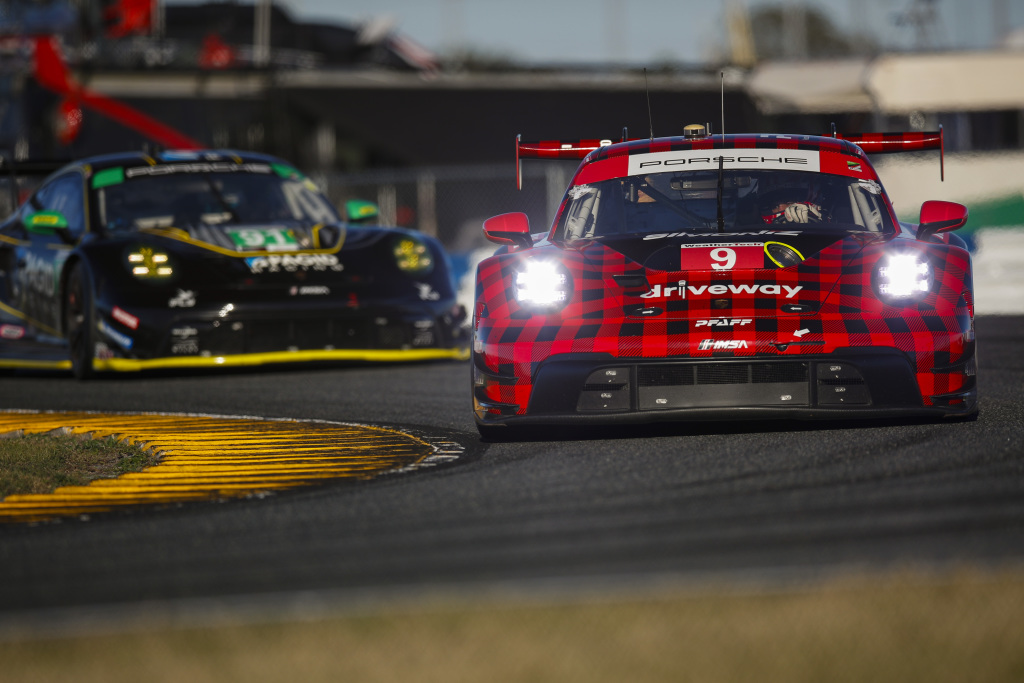
Everything changed for Pfaff Motorsports in 2022 — campaigning a new class in GTD PRO and new drivers, both of whom were experiencing their first full season in IMSA WeatherTech SportsCar Championship competition. The results, however were the same, if not more superlative: a championship for the team and drivers on the back of five victories.
It’s all new again in 2023 for the Toronto-based team, which was recently inducted into the Canadian Motorsports Hall of Fame. Two new Porsche factory drivers, one of whom looking at his first full season of IMSA, and a new car, the brand-new 992-generation 911 GT3 R. Fortunately, on the drivers’ side, switching each year isn’t too much of a challenge.
“There’s a small adjustment period, but I think that’s what makes the Porsche drivers so special, is that that adjustment period is a fraction of what it would be from someone outside of the network, if you will,” explains team manager Steve Bortolotti. “Porsche does an amazing job of grooming their drivers from through their ladder system, and once they’re contracted drivers to Porsche, they do a really good job of teaching them how to act and helping them understand the car, frankly.
“So it makes our job as a team substantially easier to have the revolving door, I guess, that we’ve had the last three years. It’s certainly not easy, but there’s a leg up with the work that Porsche has done in the background with the drivers that has made them a much easier fit than someone who doesn’t know the brand or the unique nature of the car.”
For this season, the driver lineup includes Patrick Pilet, well known to IMSA fans for having been one of Porsche’s GTLM drivers, including winning the 2015 championship. Pilet is partnered with Klaus Bachler, for whom many of the North American circuits will be new. Laurens Vanthoor joins in for the endurance races.
“It’s a big honor to be here with this great team, when they won the last two years the championship. Then together with Patrick, he has won the championship in GTLM, so he has so many races here, so much experience.”
Both drivers know maintaining the success that Pfaff has had in recent years will be no easy task, especially as they and the team work to achieve the best setups on the new car and figure out what it wants on circuits where it hasn’t seen any mileage. But they also understand the culture within Pfaff meshes with their own, and believe that even if the start is slow, they will get the team back onto the top step of the podium.
“It’s always difficult to win, and what they achieved is something really special,” declares Pilet. “We should not forget that we should stay humble because it’s a brand-new car; it’s not like you’re coming in with a past car that you know perfectly, you have all the setup and everything. We have to learn this car, we have to learn how to work also with a team. I’m not scared about this, because we have exactly the same philosophy and, and the way they work is really nice. It’s a really good approach of racing, and there are real racers. But, yeah, we will go step by step. We will try to improve every race and championship is long.”
The latest generation of Porsche’s GT3 racer had an inauspicious debut at the Rolex 24 At Daytona, where Pfaff soldiered through the race to finish fifth in GTD PRO, a lap down. IMSA usually tries to bring in new cars as underdogs, and adjust Balance of Performance parameters up to bring the car into contention. However, at Daytona, the Porsche teams were shockingly off the pace. The 992-based GT3 R is a rather different machine than its predecessor, and some of those differences are not only making it difficult for teams to adapt, but also played a part in what making might have been a small handicap — 5mm smaller intake restrictors than the previous generation — into a big one.
“It’s certainly a lot more work, I think, than we were expecting coming into the season, because the car is so dramatically different in philosophy from the previous car,” says Bortolotti. “That said, the struggles that were well documented from Daytona are something that we feel are… there’s two sides to every story, right? Certainly a function of it can be attributed to Balance of Performance, but then the drivers aren’t coming off saying, ‘The car’s perfect — put a cover on it,’ either. So we have to focus on controlling what we can control and developing the platform we have.